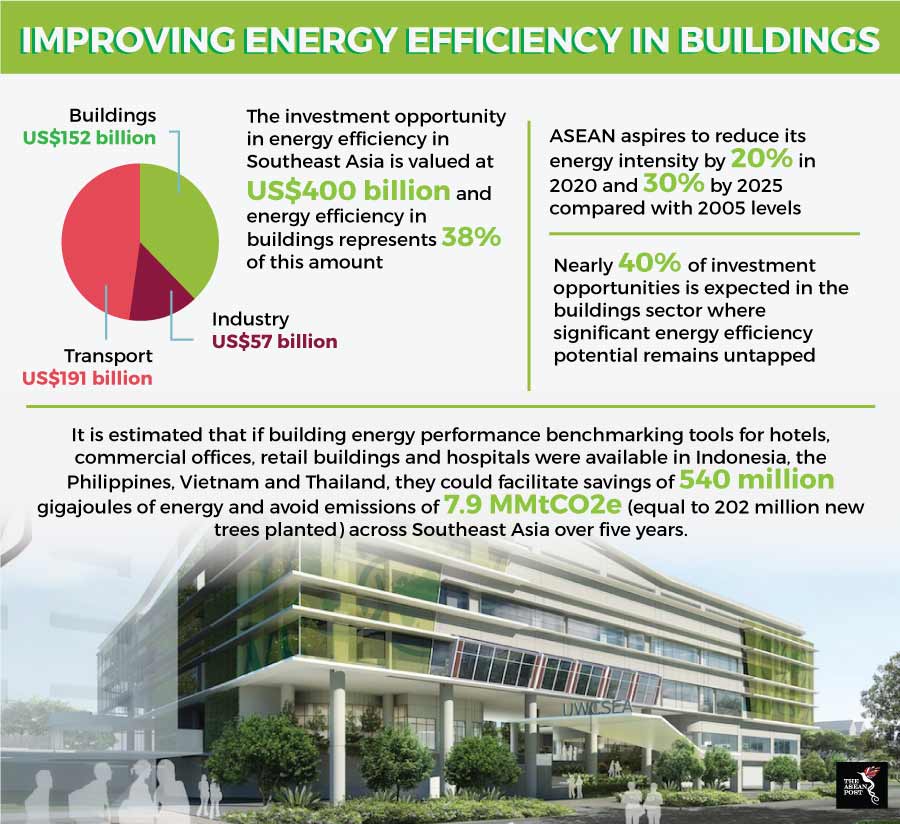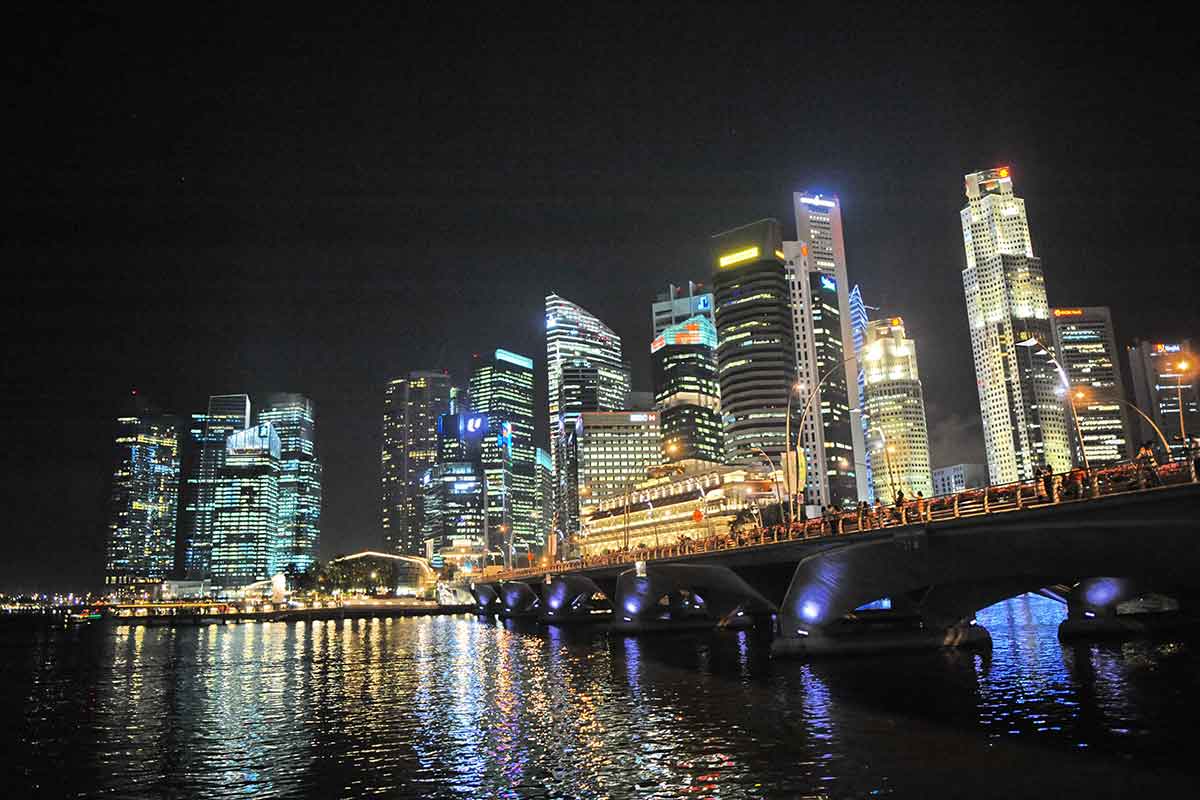Member states of the Association of Southeast Asian Nations (ASEAN) intend to reduce regional energy intensity 20 percent by 2020 and 30 percent by 2025 compared with 2005 levels. According to the ASEAN Centre for Energy (ACE), the region is on track to reach its goals as energy intensity levels have seen a downward trajectory between 1995 and 2014.
Nevertheless, future projections like these still require concentrated efforts to ensure they are realised. A key enabler towards reaching this goal is to improve energy efficiency. Energy efficiency is an important factor towards ensuring environmental and economic challenges are met in a rapid and cost-effective manner.
Improving energy efficiency of buildings
Buildings are an important piece of the energy efficiency puzzle. According to the United Nations Environment Program (UNEP), buildings are responsible for upwards of 30 percent of global greenhouse gas (GHG) emissions. Moreover, more than 50 percent of the planet’s new buildings are constructed in Asia yearly and the building sector constitutes an estimated 25 percent of overall energy consumption.
Earlier this year, it was reported that Southeast Asia was faced with a “cooling crisis” as more people are cranking up their inefficient air-conditioning systems. This has had a negative knock-on effect on the environment as the electricity used to power these systems are provided by coal-fired power stations.
While it’s true that one could just switch off the air-conditioner, the region’s hot and humid weather would make that an unpopular decision in most office buildings. The solution, however then lies in ensuring that electric devices run efficiently on as little electricity as possible. In this case, ensuring the air conditioner is installed with an energy saving inverter which reduces power consumption.
 Source: Various sources
Source: Various sources
This is just one of many ways, buildings can be made to be more energy efficient.
According to recommendations by the International Energy Agency (IEA), buildings in this region should comply with building energy codes and minimum energy performance standards (MEPS). They should also aim for net-zero energy consumption and strive to improve the energy efficiency of building envelopes, systems, and critical building components.
The most effective way of improving energy efficiency in buildings is to engage with energy service companies (ESCOs) which provide a broad range of energy solutions. These services include designing and implementation of energy savings projects, retrofitting, energy conservation, energy infrastructure outsourcing, power generation and energy supply, and risk management. ESCOs have been adopted widely especially in more developed ASEAN states like Singapore, Malaysia, Thailand and Indonesia and is fast becoming a popular financing vehicle across ASEAN.
Financing energy efficient buildings
One thing to keep in mind is that any effort to improve energy efficiency in buildings will incur additional costs. The advantage is building owners or tenants save more money in the longer term, thanks to the energy saved.
Installing energy efficiency systems opens up bountiful opportunities for investment. According to a report by the United Nations (UN) and Singaporean financial service provider, DBS, residential and commercial building sectors are estimated to have investment opportunities of US$88 billion and US$64 billion, respectively. The returns on such projects are incredibly attractive – at times exceeding 20 percent.
While energy efficiency projects can be financed completely by private financiers, the government can also play a role. For example, in Malaysia, the Energy Performance Contracting Fund helps finance projects with a target financing size of no higher than US$3.8 million and a tenure of no longer than seven years.
There is also potential for green bonds as a means of finance. City Developments Limited (CDL), a Singapore based property developer issued the island republic’s first ever green bond – a two-year secured bond worth US$74 million at a 1.98 percent coupon due in 2019 for the retrofit of an office building. The retrofitting included an upgraded chiller plant, energy efficient lights and motion sensors to reduce energy waste.
Given Southeast Asia’s rapid pace of infrastructure development, energy efficiency is undoubtedly an important aspect to consider when constructing buildings. Ultimately, it boils down to ensuring environment-friendly development which, at the same time, doesn’t disrupt our comfort.
Related articles:
Smart buildings for an energy-efficient Indonesia
